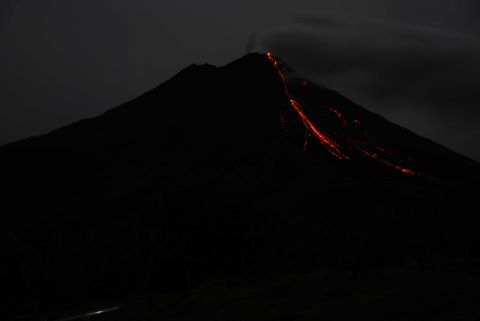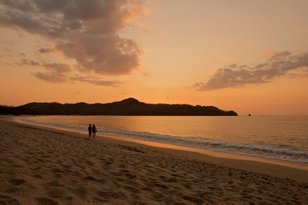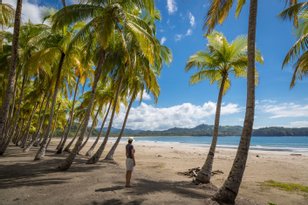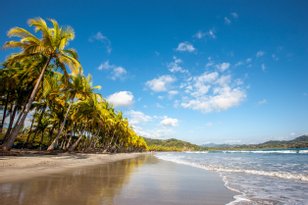The May 24 2010 Avalanche And Recent Changes To Arenal Volcano
There was a large avalanche that occurred on May 24, 2010 along the southwest flank of the Arenal Volcano. On May 29, Eliecer Duarte, a volcanologist and geochemist with the Costa Rican Institute of Volcanology and Seismographic Observatory, visited the Arenal Volcano to determine what observable changes the volcano has experienced since the May 24th avalanche.
Eruption Date: Sun May 23 2010 17:00:00 GMT-0700 (Pacific Daylight Time)
We’ve summarized some of his findings below. The full report (in Spanish) can be found here:
Although Arenal entered a resting phase in October 2010, the previous four years saw the majority of volcanic material originate from an active cone along the southwest side of the volcano. Steep walls formed a border along this side, creating an area that measures some 1300 ft by 200 ft (400m x 80m). It appears that these walls have little capacity to hold back additional materials. As a result, two channels have opened along the sides of the main lava flow, which is where these steep walls have formed. During this period, hot volcanic material frequently erupted from the active cone. The material typically consisted of hot boulders that would tumble down the slopes and break up during their descent. Along the way, the boulders would often collide with stationary materials. This material would regularly break apart and begin falling. Thus, it’s clear that a few large boulders can cause a great amount of matter to tumble down, especially when they connect with the sidewalls. In Ex:2 you will notice the materials rolling down the front of the main lava flow.

Ex: 2
Once this occurs, the materials will continue to tumble down through the material lobes and will finally reach the area where vegetation begins. Take note in Ex:3 of the burnt vegetation, a result of the May 24th avalanche.

Ex: 3
Although it’s hard to tell from the Ex:4 photograph, the majority of rocks exceed 2 meters in diameter. Being so large, they can easily break through the natural wall that has formed on the volcano. The material that created this wall originated from an active cone in Crater C, which is now known as the old cone. The old cone was very active during the last four years, but is currently inactive. The most recent activity came from a new cone that’s set along the southeast side of the summit.

Ex: 4
Ex:5 shows the southwest area where lava has flowed. On the right side of this photograph is an unstable area—the region that triggered the landslides of May 24th. The new cone that formed on top of Crater C is most likely responsible for these landslides. The formation and destruction of cones and domes on the top of Crater C is fairly common. Cones that are formed on top of unstable structures or on the edge of a crater will often collapse and trigger a landslide. That said, it’s difficult to determine where the material from the new cone will flow once it’s formed, but it’s probable that it will be to the north – a direction that would privilege many hotels with new lava views, should the volcano begin erupting again.

Ex: 5
As you can see, there is a section of unstable material between the old and new cones. The May 24th avalanche released a large chunk of this material down the southern slopes of Arenal, but there is still more material remaining.
In addition to the new cone that opened on Crater C, it appears that Crater D – the old Cerro Arenal Crater – has opened a new vent that has been steadily releasing heat. The opening of the new cone on Crater C and the vent opening on Cerro Arenal was accompanied by a large amount seismic activity that may have contributed to the May 24th avalanche.
Although the May 24th avalanche was drastic, it caused no damage and there was no danger to tourists or the area’s infrastructure.

All photos by Federico Chavarría
Check out our Arenal Volcano Map for an update on the volcano’s current activity. It did, however, enter into a resting phase in 2010. At present, no eruptions are occurring.
There are a number of excursions in Arenal that allow for close viewing of the Arenal volcano. These include hikes through the Arenal Volcano National Park and the 4-in-one Arenal excursion, which includes a trip to the waterfall, a volcano hike, and a visit to one of the area’s hot springs.
All photos on this website are the exclusive property of Arenal.net © and can not be reproduced without our written consent except for non-profit purposes with a link and credit to this site.








